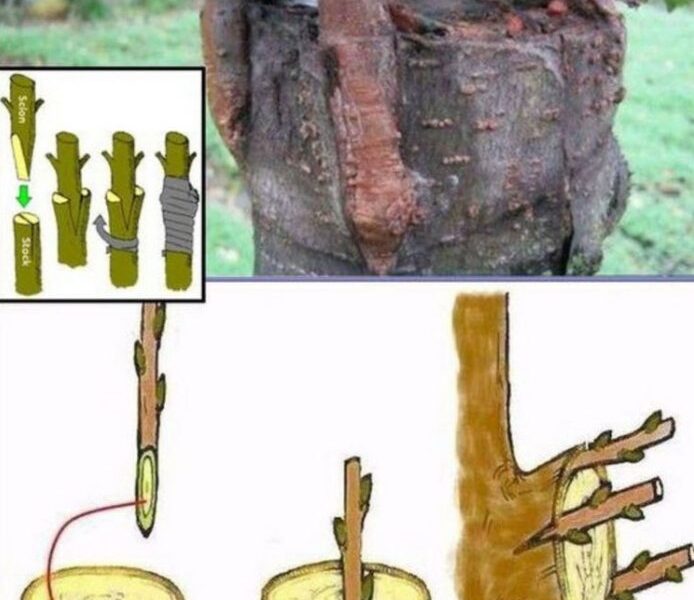How to graft trees correctly and effectively😍😍
Grafting is a horticultural technique where parts of two plants are joined to form one plant. It is commonly used in fruit tree propagation to combine the best traits of the rootstock and scion. Here is a detailed guide on how to graft trees correctly and effectively, including the bark grafting method.
Grafting an apple tree:
Choose the right time:
The best time for grafting is usually late winter or early spring, before the sap begins to flow. This allows the scion to heal and grow during the growing season.
Select Scion and Rootstock:
Scion: Choose a healthy, disease-free scion from a 1-year-old tree with 2-3 buds.
Rootstock: The rootstock must be compatible with the scion, healthy and well established. Rootstock size may vary depending on the grafting method used.
Common grafting techniques:
Whip Grafting: Ideal for similar sized rootstocks and scions. Make matching diagonal cuts on both and join them so that the cambium layers (green layer under the bark) line up.
Split grafting: Ideal for larger rootstocks. Make a vertical cut in the rootstock and insert a scion with a wedge-shaped end into the slot.
Budding (T-budding): Insert a bud into a cut in the rootstock. This method is often used in summer, when the buds are mature.
Bark graft:
Ideal for: Large rootstocks and during periods when the bark separates easily from the wood (spring).
Procedure: Make a T-shaped cut in the bark of the rootstock. Carefully remove the bark flaps and insert the scion (which should have a few buds and a small piece of wood attached). Secure the scion in place, ensuring contact with the cambium layer of the rootstock.
Post-transplant care:
Seal the scion with grafting wax or tape to prevent drying out.
Ensure adequate watering and avoid fertilizing until the graft is fully established.
Monitor the graft for signs of growth or failure and adjust care if necessary.
Tips for success :
Sterilize all tools before grafting to prevent the spread of diseases.
Make clean, precise cuts to ensure good contact between the cambium layers.
Label the grafted plants for future reference.
Patience is the key. Some grafts may take time to establish.
Grafting can be a rewarding process, allowing gardeners and orchardists to create unique combinations of fruit trees or repair damaged trees. Each method has its own advantages, and understanding them can help you choose the best technique for your specific needs. With practice and care, grafting can lead to successful and productive growth in your garden or orchard.
